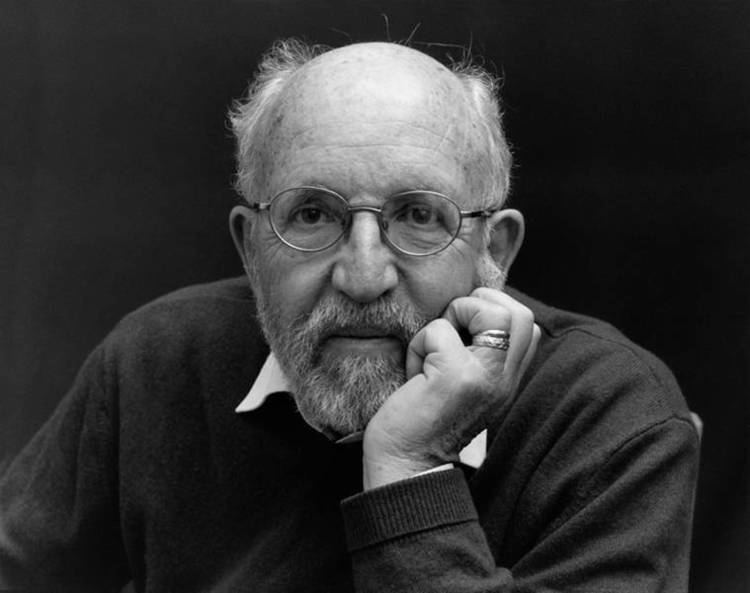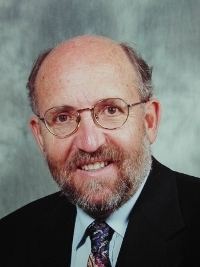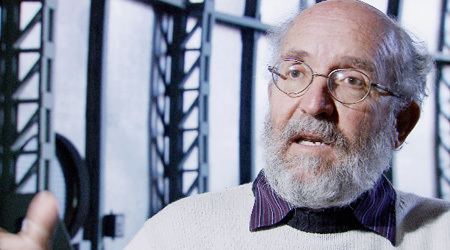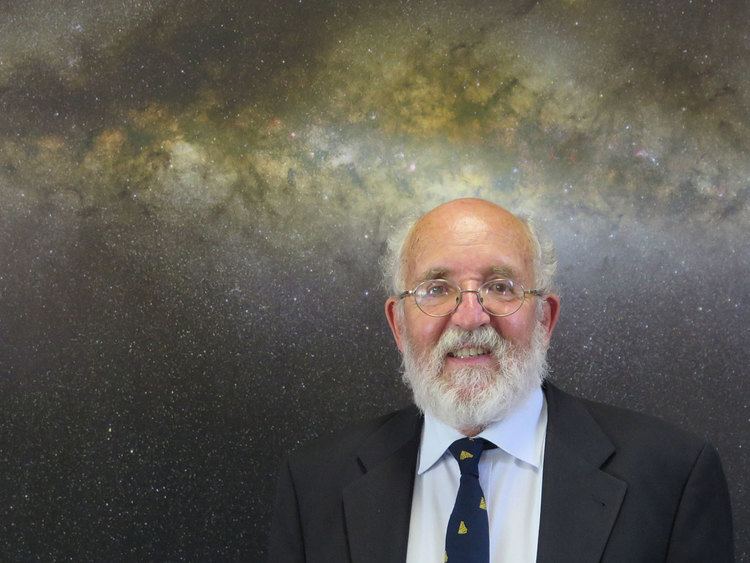Nationality Swiss Role Astrophysicist | Name Michel Mayor Occupation Astrophysicist | |
 | ||
Born January 12, 1942 (age 83) ( 1942-01-12 ) Books New Worlds in the Cosmos: The Discovery of Exoplanets Discovered HD 40307 d, HD 114386 b, HD 168746 b Similar People Didier Queloz, Stephane Udry, Geoffrey Marcy, David Charbonneau, Steven S Vogt | ||
Michel mayor and didier queloz 2011 bbva foundation frontiers of knowledge in basic sciences
Michel G.E. Mayor (born 12 January 1942, Lausanne) is a Swiss astrophysicist and professor emeritus at the University of Geneva's Department of Astronomy. He formally retired in 2007, but remains active as a researcher at the Observatory of Geneva. He is co-winner of the 2010 Viktor Ambartsumian International Prize, and the winner of the 2015 Kyoto Prize.
Contents
- Michel mayor and didier queloz 2011 bbva foundation frontiers of knowledge in basic sciences
- Michel mayor d autres terres dans l univers
- Academic positions
- Research
- Awards and distinctions
- Participation in professional associations
- References

Together with Didier Queloz in 1995 he discovered 51 Pegasi b, the first extrasolar planet orbiting a sun-like star, 51 Pegasi.

After earning a master's degree in Physics at the University of Lausanne in 1966, Mayor obtained his doctorate in Astronomy at the Geneva Observatory in 1971. His thesis included an "Essay on the kinematical properties of stars in the solar vicinity: possible relation with the galactic spiral structure."

He studied briefly at the University of Cambridge Institute of Astronomy and spent sabbatical semesters at the European Southern Observatory (ESO) in Chile and at the Institute for Astronomy of the University of Hawaii.
Michel mayor d autres terres dans l univers
Academic positions
From 1971-84, Mayor worked as a research associate at the Observatory of Geneva, which is home to the astronomy department of the University of Geneva. He became an associate professor at the university in 1984. In 1988, the university named him a full professor, a position he held until his retirement in 2007. Mayor was director of the Observatory of Geneva from 1998 to 2004. He has been professor emeritus at the University of Geneva since 2007.
Research
Mayor's research interests include extrasolar planets (also known as exoplanets), instrumentation, statistical properties of double stars, globular cluster dynamics, galactic structure and kinematics.
His doctoral thesis at the University of Geneva was devoted to the search for evidence of a spiral structure in the Milky Way galaxy in the velocity distribution of stars close to the Sun. Kinematics data at that time were scarce and in particular acquiring the "radial velocities" of stars was a long and fastidious process. Upon completing his thesis, Mayor decided to develop a special spectrograph, CORAVEL, to measure stellar radial velocity. "This was the start of my interest in stellar kinematics," he said, according to information in his curriculum vitae.
This research led to various fields of interest, including the study of statistical characteristics of solar-type binary stars. With fellow researcher Antoine Duquennoy, he conducted a survey of small-mass companions of stars analogous to the sun, releasing the results in one of the most cited papers published by Astronomy and Astrophysics during its first 40 years. Mayor and Duquennoy then discovered that the mass of some of these companions could be sub-stellar.
The evolution of technology allowed for the development of a new spectrograph, ELODIE, built at the Haute-Provence Observatory in the south of France. Mayor and Didier Queloz, a graduate student at the University of Geneva, began using the instrument in 1994 to measure night after night 140 stars similar to the Sun. The study was aimed at discovering "brown dwarfs", as well as giant planets.
At the end of 1994, the pair noted that the star 51 Pegasi showed a periodic variation or movement that could be caused by the orbit of a planet smaller in size than Jupiter. Remarkably, the orbital period appeared to be only 4.2 days, which contradicted what was then believed to be theoretically possible. However, further data allowed Mayor and Queloz to announce the discovery of the first exoplanet orbiting a sun-like star on 6 October 1995.
Thus began a new field of research in astronomy. As of early October 2011, researchers around the world had discovered more than 680 exoplanets, many of them large so-called "hot Jupiters", gaseous planets many times the size of earth. Mayor and his collaborators have identified around 200. However, his team has concentrated its research on smaller planets, "super-earths", closer in mass to Earth. In 2003, his latest planet searching instrument, the High Accuracy Radial Velocity Planet Searcher (HARPS), came online at the European Southern Observatory (ESO)'s telescope at La Silla Observatory in Chile, allowing for more precise measurements of radial velocities.
In 2007, Mayor was one of 11 European scientists who discovered Gliese 581 c, the first extrasolar planet in a star's habitable zone, from the ESO telescope.
In 2009, Mayor and his team discovered the lightest exoplanet ever detected around a main sequence star, Gliese 581 e.
By October 2011, Mayor had co-authored more than 700 scientific publications. From 1989-92 he was involved in scientific research at ESO, from 1988 until 1991 he worked on the study of galactic structure with the International Astronomical Union. From 1990-93 he was president of the Swiss Society for Astrophysics and Astronomy.
In 2011, Mayor delivered a talk, “Extrasolar Planets in the Galaxy,” at the first Starmus Festival in the Canary Islands. His talk was published in the book Starmus: 50 Years of Man in Space.
Awards and distinctions
In August 1998, Mayor was awarded the Swiss Marcel Benoist Prize in recognition of his work and its significance for human life. As of 2003, he was a member of the board of trustees. He received the Prix Jules Janssen from the Société astronomique de France (French Astronomical Society) in 1998.
In 2000, he was awarded the Balzan Prize. Four years later, he was awarded the Albert Einstein Medal. In 2005, he received the Shaw Prize in Astronomy, along with American astrophysicist Geoffrey Marcy. Mayor was made a knight of the French Legion d'Honneur in 2004.
In collaboration with Pierre-Yves Frei, Mayor wrote a book in French called Les Nouveaux mondes du Cosmos (Seuil, 260 pages), which was awarded the Livre de l'astronomie 2001 prize by the 17th Astronomy Festival Haute Maurienne, (France).
Mayor has received honorary doctorate degrees from eight universities: Katholieke Universiteit Leuven (Belgium), 2001; Swiss Federal Institute of Technology at Lausanne (EPFL) (2002); Federal University of Rio Grande do Norte (Brazil), 2006; Uppsala University (Sweden), 2007; Paris Observatory (France), 2008; Université Libre de Bruxelles (Belgium), 2009; University of Provence (Marseille, France), 2011, Université Joseph Fourier (Grenoble, France), 2014;.
Mayor has received the 2011 BBVA Foundation Frontiers of Knowledge Award of Basic Sciences (together with his former student Didier Queloz) for developing new astronomical instruments and experimental techniques that led to the first observation of planets around Sun-like stars.
In 2015 he was awarded the Gold Medal of the Royal Astronomical Society. In 2017 he will receive the Wolf Prize in Physics.
